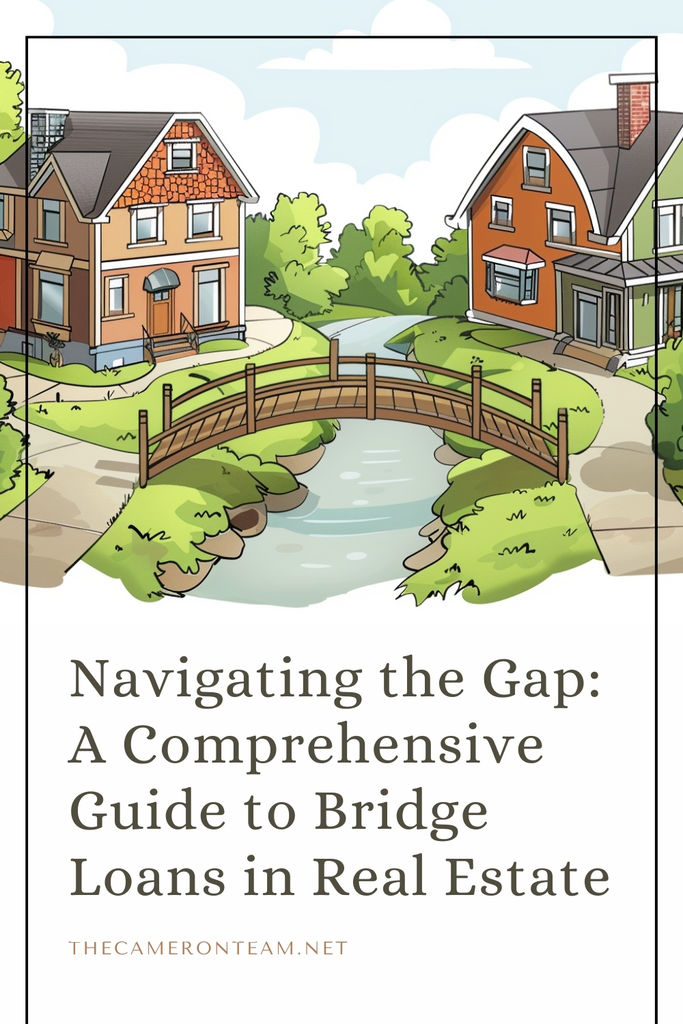In the dynamic world of real estate, timing is often a critical factor that can make or break a deal. Whether you’re an eager buyer looking to secure your dream home before selling your current property or a seller awaiting the right market conditions, bridge loans emerge as a strategic financial tool designed to bridge this timing gap. This comprehensive guide will walk you through the essentials of bridge loans, the qualifications required to secure one, and the steps to obtaining it, all wrapped in a semi-casual tone to make the information both accessible and engaging.
Understanding Bridge Loans: The Basics
A bridge loan, aptly named for its primary function of bridging the financial gap between transactions, is a short-term loan that provides immediate cash flow. In the realm of real estate, it’s typically used to purchase a new property before the sale of an existing property is finalized. These loans come with a shorter term, usually up to one year, and can be secured by the equity in the borrower’s current home.
The allure of a bridge loan lies in its ability to facilitate a smooth transition between properties, allowing homeowners to leapfrog from their current residence to their next without the stress of aligning sale and purchase dates perfectly. However, this convenience comes at a cost, often including higher interest rates and fees compared to traditional mortgages.
Qualifications for a Bridge Loan: What You Need to Know
Securing a bridge loan requires a thorough understanding of the qualifications lenders look for, which can vary significantly from those of conventional loans. Here’s what you need to know:
Strong Financial Standing
Lenders will scrutinize your financial health, including your credit score, debt-to-income ratio, and liquidity. A robust financial profile with a credit score above 700 and a low debt-to-income ratio enhances your eligibility for a bridge loan.
Equity in Your Current Home
Since a bridge loan is frequently secured by the borrower’s existing property, having substantial equity in your current home is crucial. Most lenders require at least 20% equity to consider your application.
Exit Strategy
Lenders are keen on understanding your plan for repaying the bridge loan. Typically, the sale of your current home serves as the primary exit strategy. Demonstrating a clear path to selling your property at a marketable price point is essential.
How to Get a Bridge Loan: Step-by-Step
Embarking on the journey to obtain a bridge loan involves several key steps. Here’s a streamlined guide to navigate this process:
Step 1: Assess Your Financial Health
Before diving into the application process, take a comprehensive look at your financial landscape. Ensure your credit score is in good standing and evaluate your current home’s equity. This preliminary step can save you from surprises down the line.
Step 2: Shop Around for Lenders
Not all lenders offer bridge loans, and among those that do, terms and rates can vary widely. Take the time to shop around and compare offers. Look beyond traditional banks to include credit unions and private lenders in your search.
Step 3: Gather Necessary Documentation
Prepare to present detailed documentation, including proof of income, asset statements, and information about your current home and the home you’re looking to purchase. The more organized and thorough you are with your paperwork, the smoother the process will be.
Step 4: Apply for the Loan
Once you’ve chosen a lender and compiled your documents, submit your application. Be prepared for a rigorous assessment process, as lenders will carefully evaluate your financial stability and the viability of your exit strategy.
Step 5: Close on the Loan
If approved, the final step is closing on the loan. This involves reviewing and signing a multitude of documents, so ensure you understand all terms and conditions before proceeding. Once closed, the funds from the bridge loan can be used to secure your new property.
Conclusion
Bridge loans can be a powerful tool in your real estate arsenal, offering a flexible solution to the common problem of timing discrepancies between buying and selling properties. However, they’re not without their risks and costs. By understanding the qualifications required and the steps involved in securing a bridge loan, you can make an informed decision that aligns with your financial situation and real estate goals.
Remember, while bridge loans offer a path to swiftly transition between homes, they’re best suited for those with strong financial foundations and clear exit strategies. With careful planning and the right qualifications, a bridge loan can smooth the way to your next real estate adventure.






